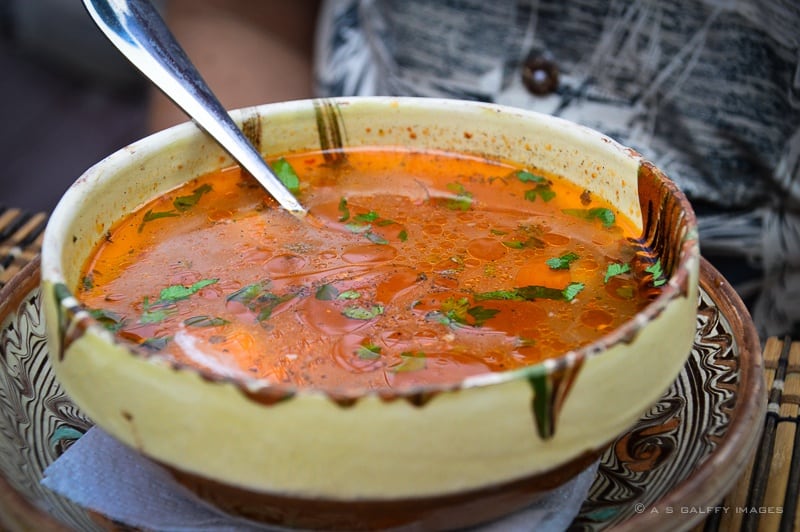[ad_1]
One of the things that people traveling to Romania remember the most, is the country’s tasty food. Yes, Romania’s beautiful scenery, medieval towns and historic castles are unforgettable too, but the traditional Romanian dishes will linger in your memory much longer than the other attractions.
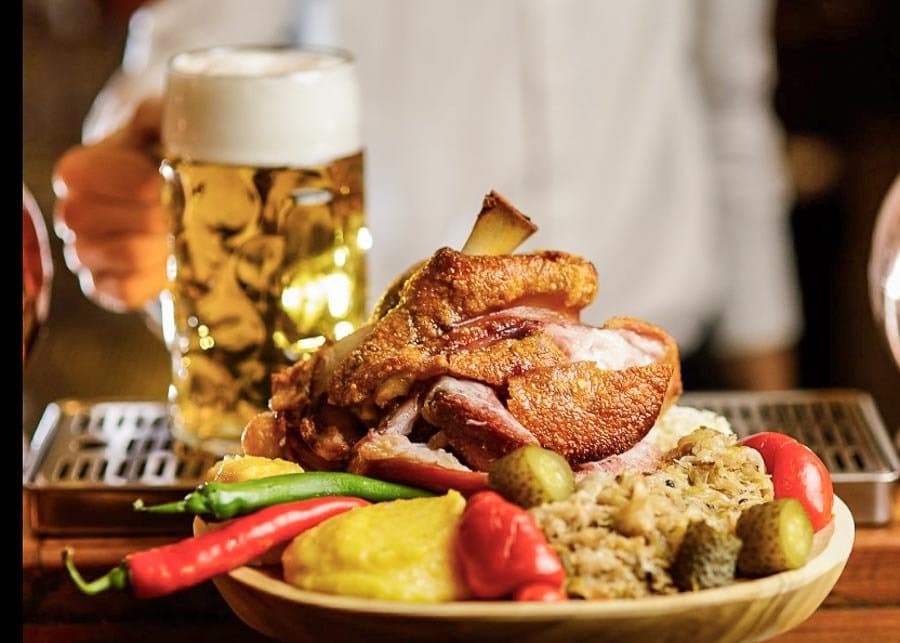
That’s partly because food memories are more sensory than other memories, but it’s also because Romanian food is absolutely delicious. The country has an old culinary tradition, so from the villages of Transylvania to the capital city of Bucharest, almost anywhere you stop to eat you’ll find fresh, delicious foods.
About Romanian Food
Throughout the centuries, Romanian food recipes suffered the influence of many different cultures. Such were the Saxons and Hungarians who settled in Transylvania, the Greeks with whom Romanians traded, or the Turks who dominated the country for centuries. But despite these influences, Romanian cuisine has kept its identity and taste unaltered.
If this is your first time in Romania, you might not know what to order when you get into a Romanian restaurant. Maybe the menu is just not properly translated. Or maybe the waiter doesn’t speak English well enough in order to make good recommendations, so you end up by ordering pizza or pasta, just because you don’t know what the local cuisine is. Therefore, this article is intended to be a food guide to help you choose the best authentic traditional dishes when you get into a Romanian café or restaurant.
Traditional Romanian Dishes
Romanians love to cook and good food has always been an important part of the Romanian culture. Traditional Romanian dishes are neither elaborate nor fancy, but they are very tasty and are generally liked by foreigners. And while the country may not be famous for the best street food in Europe, it surely is famous for for its great cafés and restaurants.
When it comes to food, we each have very different preferences. Even within the same culture or the same family, tastes are very different. There are only a handful of cuisines that cross the cultural borders with ease. So here are some of the traditional Romanian dishes that I grew up with and also cooked for my family for many years:
Salata de Vinete (Grilled Eggplant Salad)
Salata de Vinete (eggplant salad) is a very popular food in Romania and one of my most favorite Romanian dishes. It is actually a starter, with a soft and creamy texture that makes it quite addictive.
In Romania this is a seasonal dish, prepared mainly in summer time, when you can find fresh eggplants on the market. But some people would preserve the grilled eggplants and make the salad in other seasons as well. It is very easy to prepare.
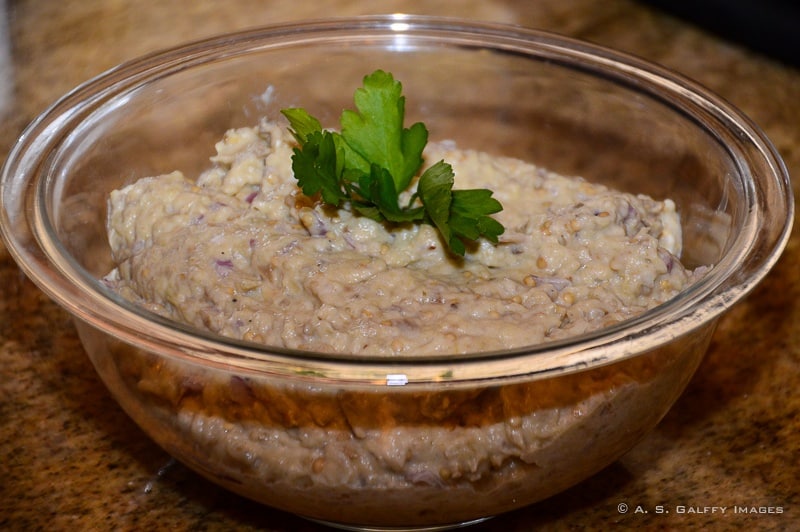
The eggplants need to be grilled on the barbecue (10-12 min. on each side) until the peel gets slightly burned and the flesh is soft. The eggplants need to be poke it with a fork before cooking, to let the steam out.
When they are cooked you peel off the black peel and lay them flat to drain (approx. 12 hrs), then chop them finely with a sharp knife. After that you mix them with onion (chopped), salt, and a spoon of mayonnaise. You can add 3-4 spoons of olive oil a bit at a time, mixing with a wooden spoon.
READ NEXT: 15 Fun and Interesting About Romania You Probably Didn’t Know
Ciorbā de Perisoare (Meatball Sour Soup)
Ciorba is a distinctive type of soup made with sauerkraut juice, borscht, vinegar, or with fresh lemon juice. The beaf-and-rice meatballs bring a delicious flavor and substance to the paprika-spiced broth.
For seasoning, you need to use with fresh herbs like baby dill, parsley and especially lovage that enhances the taste in a very specific way. Unfortunately, we can’t find fresh borsch in our grocery stores in America, so most of the time I either use powder of borscht, or lemon juice. We eat the meatball sour soup with hot cilli peppers.
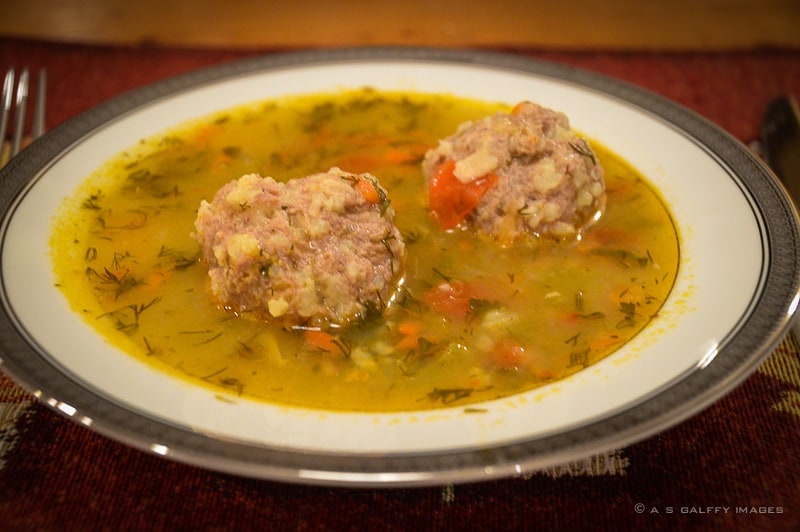
Ciorbā de Burtā (Tripe Soup)
Tripe soup is a very popular Romanian food. One of the reasons is its delicious taste, but the other is that many people use is as the ultimate hangover remedy.
For most people, the tripe soup is a delicacy, but for some this is a disgusting recipe that they won’t even try: made with tripe (the stomach of a cow), lots of garlic and sour cream and soured with vinegar.

Tripe soup is also good with hot cilli peppers.
Salatā ‘de Beuf‘ (Beef Salad)
Beef Salad (Salata ‘de beuf’) is the most traditional food in Romania for the holidays. It is usually a starter, but it can also be a meal on its own.
You may not see this on the restaurants’ menus in Romania because preparation is a bit tedious. Nonetheless, you will always find it in most households around Christmas or Easter.
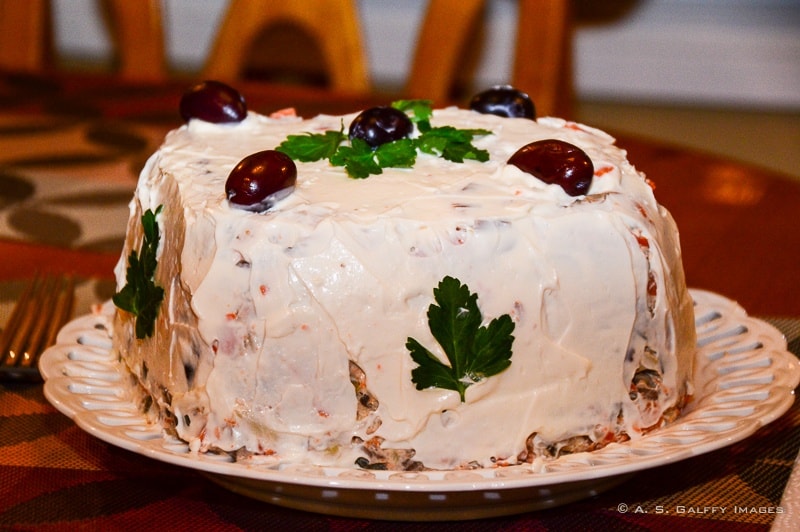
The ingredients are: fine chopped meat, potatoes, celery root, parsley root, carrots and pickles. The meet (it can be beef, turkey, or chicken) has to be boiled until it becomes very tender, but the vegetables don’t have to be overcooked.
I mix the ingredients together into a bowl with mayo and mustard (I use mustard with horseradish to give it a little spice). Then I place the mixture on a platter and shape it like a dome, then cover it with a very thin layer of mayo. At the end, I decorate it with olive and parsley leaves.
Ardei Umpluti (Stuffed Bell Pepper)
You can make this dish either with squash or with bell pepper. We usually eat it after the soup, as the second course. This is a baked dish stuffed with ground beef or turkey, rice, onion, herbs and spices. You can serve it with/without sour cream. Very, very tasty!
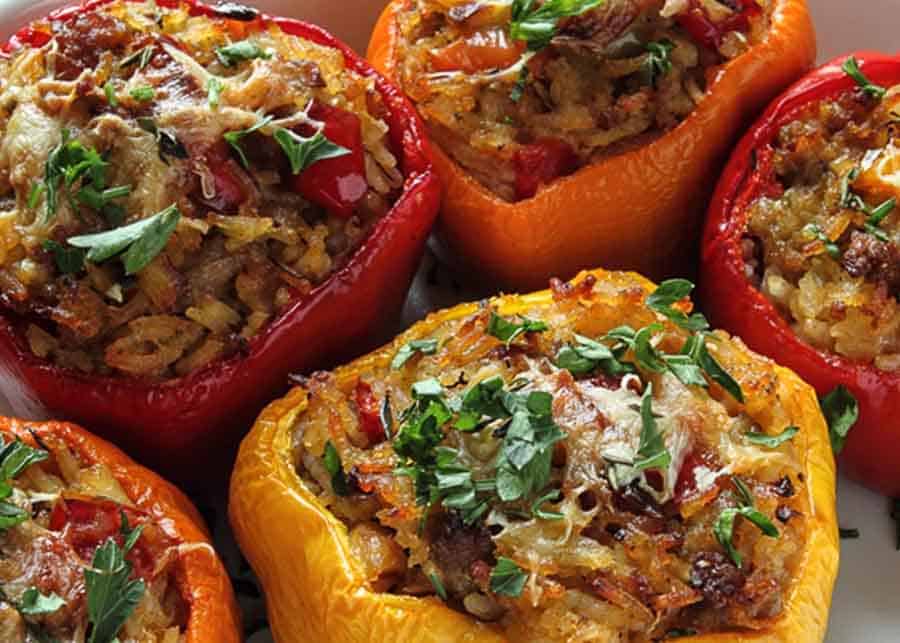
You first fry a chopped onion and then add the ground meat mixed with a cup of white rice, herbs and spices. You may also add an egg to make the ingredients stick together better when you stuff the bell peppers.
Pastrama de Oaie cu Mamaligutā (Grilled Mutton Pastrami with Polenta)
Grilled mutton pastrami with polenta is a specialty that you won’t see on every restaurant menu. This is actually a peasant food that my grandmother used to make us when we were kids. The mutton pastrami is very salty so this dish is best when served with wine.
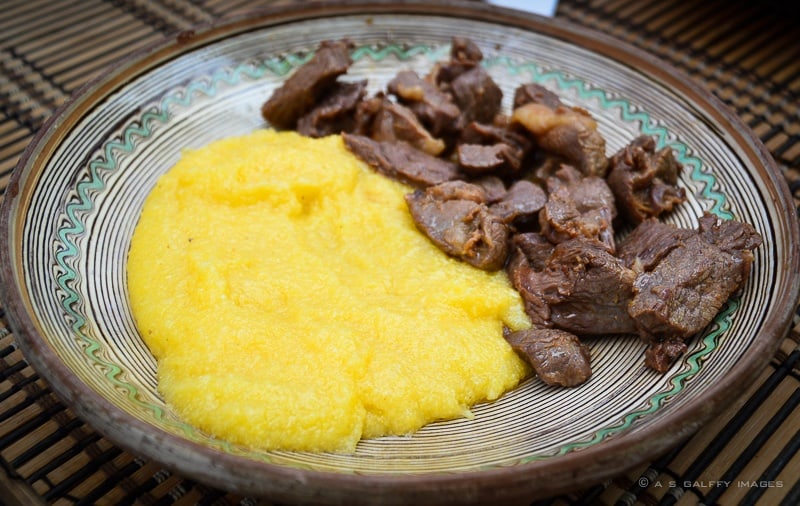
I haven’t eaten this dish in ages, so I was delighted to see this on the menu of a restaurant at the Village Museum in Bucharest.
Cîrnaciori cu Varzā Cālitā (Roasted Sausages with Sauerkraut)
This delicious Romanian dish is usually made with home-made sausages and sometimes served with sour cream on top. The sausages are covered with sauerkraut and placed in the oven. When the the sauerkraut is fully cooked, the sausages are placed on top then placed back in the oven till they become fully roasted.
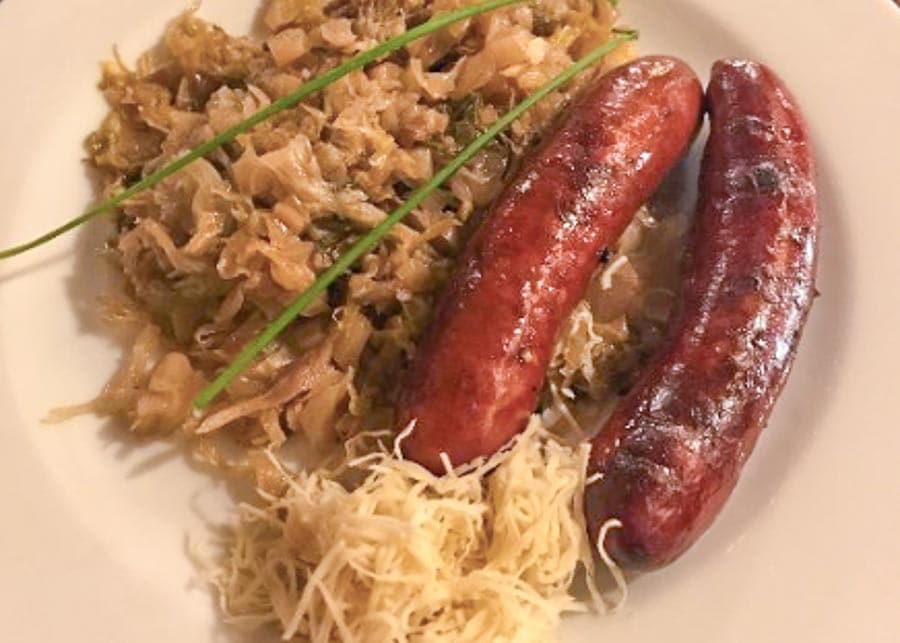
Germans and Hungarians are also claiming this recipe as their own. However, since all these three nations lived together for centuries in the northern part of Romania, it’s hard to tell which of them was the original creator.
Piftie (Aspic with Beef/Pork and Eggs)
Piftie is another traditional Romanian dish usually prepared for an Christmas and New Year. Aspic is a dish in which ingredients are set into a gelatin made from a meat stock or consommé.
You can use nearly any type of meat to make the gelatin: pork, beef, veal, chicken, turkey. Piftie is usually a starter, although many people eat it as a main dish.
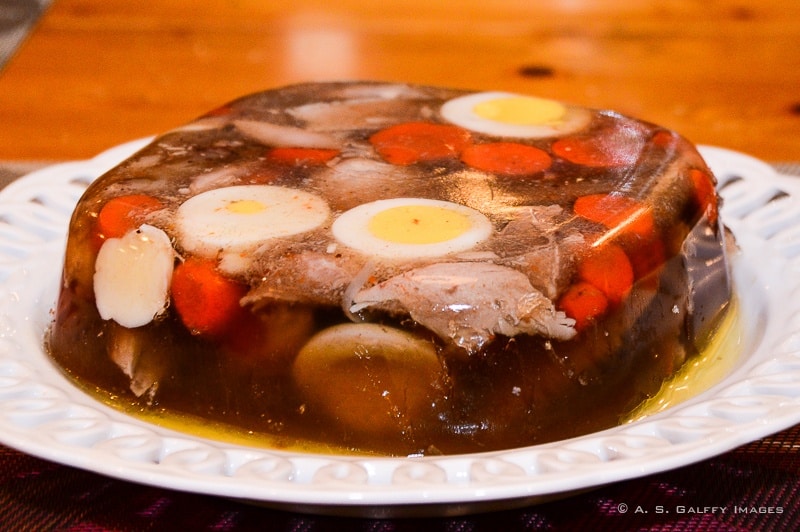
The recipe takes a long time to prepare. You need to boil the cow/pork feet for at least 4-5 hours in order to make the gelatin. You can add the meat later and cook it until it begins to separate from the bone by itself. When the meat is ready, you remove the bones and add vegetables and spices (usually pepper, bay leaves, onion, carrots, celery).
At the end, you pour the meat and stock into shallow bowls and add garlic, thin slices of carrots and eggs. After it cools off enough, you place the bowls in the fridge or outside, if the weather is cold enough. You know when Piftie it’s ready if It coagulates into jelly and you can cut it into slices.
Sarmale cu Mamaliguta (Stuffed Cabbage Rolls with Polenta)
Stuffed cabbage rolls (sarmale) with polenta is perhaps the most popular food in Romania and my favorite traditional Romanian dish. Some other other countries in the Balkan territory also claim this as their traditional dish, but that’s not surprising.
Each region in Romania prepares the stuffed cabbage rolls in their own way, but the taste is just about the same.
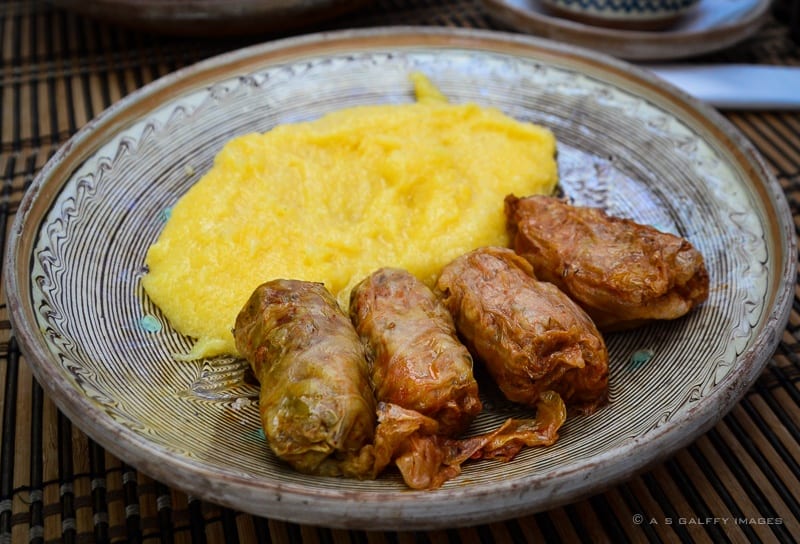
You can make cabbage rolls with any type of minced meat, rice and spices or. If you are a vegetarian, you can replace the meat with grinded nuts and chopped mushrooms. You can eat sarmale year-round in Romania, but they are a traditional food for Christmas and New-Year’s Eve.
Ciolan de Porc la Captor (Roasted Pork Knuckles)
Roasted pork knuckles is a traditional Romanian dish especially popular in Transylvania. I personally don’t eat pork, so I can’t give you my personal opinion about this dish, but my friends who do swear by it!
You infuse the meat with garlic and cumin and cook it at slow fire in the oven until crisp. You can serve it potato dumplings, or mashed potatoes.

Tochiturā Bucovineanā (Beef Stew with Potatoes)
Beef stew with potatoes is a slow-cooked casserole of tender beef in a red wine and tomato sauce, with potatoes, onions, and baby carrots. This is a very popular food in Bucovina, the northern part of Romania.
The meat can be cut in small pieces, sliced or left as a chunk. Can be served with pickled cucumbers.
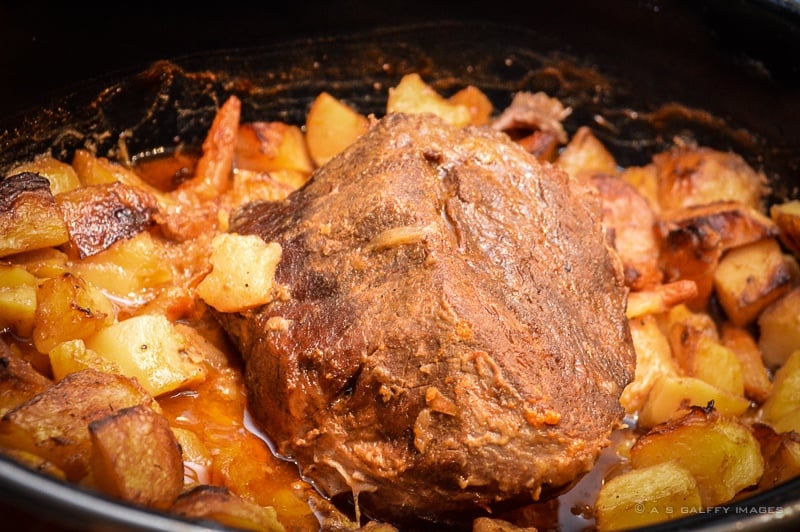
Mici cu Mustar (“Little Ones” with Mustard)
Mititei or mici (both Romanian words meaning “little ones”, or “small ones”) is a traditional Romanian dish consisting of grilled ground meat rolls in cylindrical shape. The mixture is usually beef, lamb, bork and spices like garlic, black pepper, coriander, savory and anise.
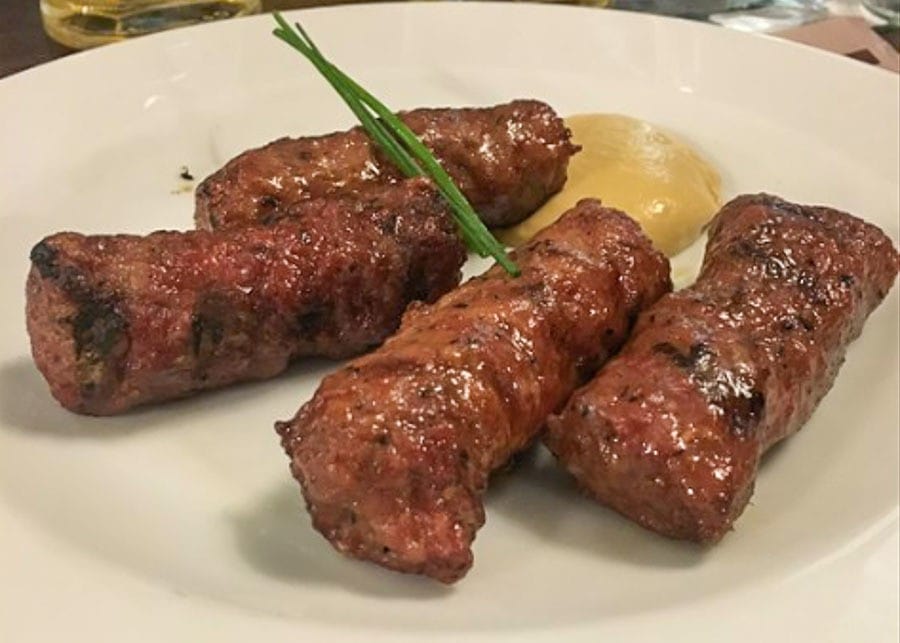
Sometimes called the “national food of Romania,” Mici are easy to find almost anywhere in the country, from small food kiosks to some of the fanciest restaurants in Bucharest.
Papanasi cu Smîntînā (Cheese Doughnuts with Sweet Cream)
If you are a fan of fried donuts/doughnuts, this traditional Romanian dessert is the best ‘donut’ you’ll ever taste! Soft yet crunchy, oozing with sour cream and blueberry jam, every bite is a complete delight.
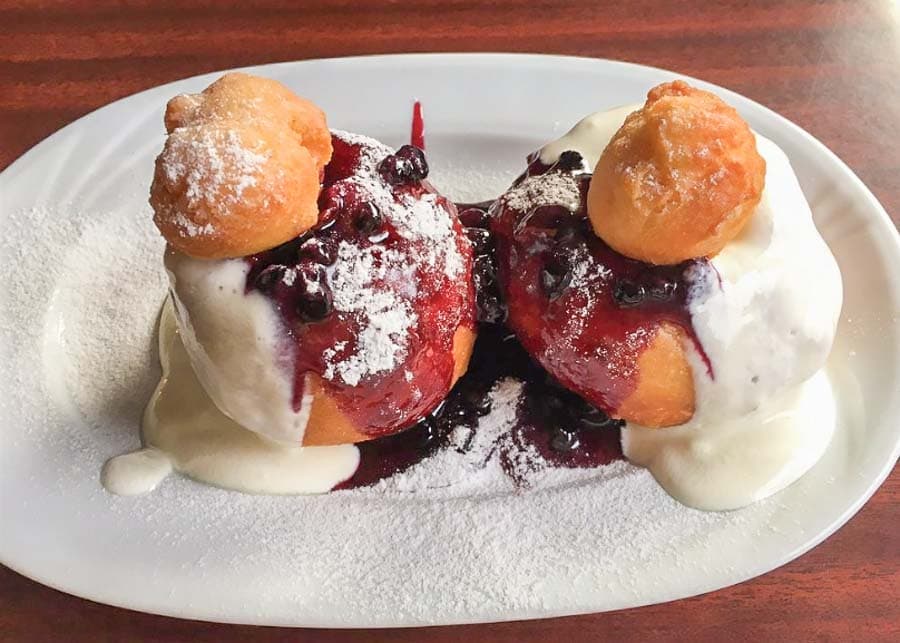
I don’t particularly like doughnuts, but I’m absolutely in love with Papanasi, which are actually made with cottage cheese, eggs and semolina flour.
There are two kinds of Papanasi: fried or boiled. Both are served with crème fresh (sweet cream) and blueberry jam. They our out-of-this-world delicious!
A Final Word
If you never tried any of these traditional Romanian dishes, I strongly recommend you order them when you visit Romania. Look for the authentic traditional restaurants that still serve Romanian food.
Lately, many of the fancier restaurants in Bucharest try to cater to international tourists and serve more of an eclectic menu. Nonetheless, you will still find these delicious dishes on the list, but you’ll have to look for them specifically.
RELATED POSTS:
[ad_2]
